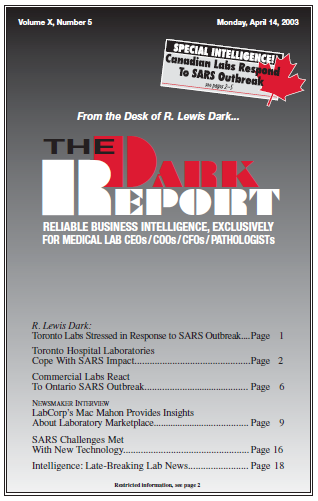CEO SUMMARY: Canada has become one of the world’s hot spots for SARS. Concern about the unexpected number of hospital workers who contracted the disease triggered a halt to all but the most life-threatening patient care needs in many hospitals in Ontario. The manner in which this disease is transmitted is causing lab administrators in …
Toronto Hospital Labs Cope With SARS Impact Read More »
To access this post, you must purchase The Dark Report.


